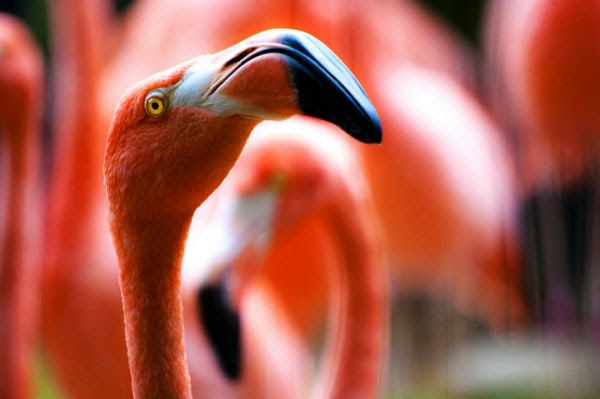 The following is an article from The Annals of Improbable Research.
The following is an article from The Annals of Improbable Research.
Research involving feathers
compiled by Katherine Lee, Improbable Research staff
Eating Feathers (1966)
“Methods for Determining the Nutritive Value of Feather Meals,” W.E. McCasland and L. R. Richardson, Poultry Science, vol. 45, 1966, pp. 1231–6. The authors, at Texas A&M University, report:
The nutritive value of raw and hydrolyzed feather meals was determined by the growth of rats, by enzymatic digestion in vitro, and by quantitative microscopic analysis of feces of rats consuming diets that contained the feather protein. Rats fed raw feathers as the sole source of protein lost weight and the mortality was 100%. Those fed hydrolyzed feathers failed to gain weight but none succumbed during a six week test period.
Eating Feathers (2008)
“Responses to Sweet and Bitter Tasting Feathers in Laying Hens,” A. Harlander-Matauschek, F. Wassermann and W. Bessei, Proceedings of the 42th International Congress of the ISAE, 2008, p. 22.
 Eating Feathers (2009)
Eating Feathers (2009)
“Physical Characteristics of Feathers Play a Role in Feather Eating Behavior,” A. Harlander-Matauschek and U. Feise, Poultry Science, vol. 88, no. 9, 2009, pp. 1800–4. The authors, at the University of Hohenheim, Germany, report:
Ten birds were individually given access to 4 plastic elements, each perforated with 4 feathers 2, 4, 6, or 8 cm in length (i.e., 1 flat piece of plastic for each feather length). Another 10 hens were given access to 3 identical plastic elements, each perforated with 4 pieces of feather 2 cm in length from the calamus (part of the shaft closest to the bird body), middle (shaft with outer and inner vane), or tip (part of the shaft with vane furthest from bird body) of the feathers, respectively. The number of feathers of different lengths and regions plucked and eaten from each plastic element was recorded. Birds were tested over a period of 10 d on a daily basis. Laying hens preferred shorter feathers over longer ones.
Makeup Use by Flamingos

“Greater Flamingos Phoenicopterus roseus Use Uropygial Secretions as Make-up,” Juan A. Amat,
Miguel A. Rendón, Juan Garrido-Fernández, Araceli Garrido, Manuel Rendón-Martos and Antonio Pérez-Gálvez, Behavioral Ecology and Sociobiology, vol. 65, no. 4, 2011, pp. 665–73. The authors, at Consejo Superior de Investigaciones Científicas, Sevilla, Spain and other institutions report:
It was long thought that the colour of bird feathers does not change after plumage moult. However... The coloration of plumage due to deliberate staining, i.e. with cosmetic purposes, may help individuals to communicate their quality to conspecifics.... We show not only that the colour of feathers of greater flamingos
Phoenicopterus roseus became more colourful due to the application of carotenoids from uropygial secretions over the plumage but also that the feathers became more colourful with the quantity of pigments applied over them, thus providing evidence of cosmetic coloration. Flamingos used uropygial secretions as cosmetic much more frequently during periods when they were displaying in groups than during the rest of the year.
 Detail from the study “Greater Flamingos Phoenicopterus roseus Use Uropygial Secretions as Make-up.”
Detail from the study “Greater Flamingos Phoenicopterus roseus Use Uropygial Secretions as Make-up.”
Which Feels Heavier—A Pound of Lead or a Pound of Feathers?
“ ‘Which Feels Heavier—A Pound of Lead or a Pound of Feathers?’: A Potential Perceptual Basis of a Cognitive Riddle,” Jeffrey B Wagman, Corinne Zimmerman, and Christopher Sorric, Perception, 2007, volume 36, pages 1709–11. (Thanks to Ig Nobel winner Chris McManus for bringing this to our attention.) The authors, at Illinois State University in Normal, Illinois, explain:
“Which weighs more—a pound of lead or a pound of feathers?” The seemingly naive answer to the familiar riddle is the pound of lead. The correct answer, of course, is that they weigh the same amount. We investigated whether the naive answer to the riddle might have a basis in perception. When blindfolded participants hefted a pound of lead and a pound of feathers each contained in boxes of identical size, shape, and mass, they reported that the box containing the pound of lead felt heavier at a level above chance. Like the size/weight illusion, the naive answer to the riddle may reflect differences in how easily the objects can be controlled by muscular forces and not a perceptual or cognitive error.
_____________________
 The article above is from the September-October 2014 issue of the Annals of Improbable Research. You can download or purchase back issues of the magazine, or subscribe to receive future issues. Or get a subscription for someone as a gift!
The article above is from the September-October 2014 issue of the Annals of Improbable Research. You can download or purchase back issues of the magazine, or subscribe to receive future issues. Or get a subscription for someone as a gift!
Visit their website for more research that makes people LAUGH and then THINK.
Eating Feathers and other Feather Research